(first posted 2/22/2017) Last week Eric703 served up this fantastic post on the 1967 Chrysler Newport Custom, prompting lively discussion on how the Chrysler stacked up relative to its competitors from GM and FoMoCo. To gain some period insight, let’s take a look at Road Test Magazine from September 1965 (well, off by 2 years, but close enough). The issue offered an overview of “Medium Standard” sedans from Buick, Chrysler, Mercury, Oldsmobile and Pontiac, even going so far as to pick a winner.
First off, the automotive segment definitions in the mid-1960s were rather different than today. The lions share of sales in America went to domestic brands, so the industry segmentation was defined by Detroit (imported brands were typically grouped together as “Foreign” or “Imports” and could be anything from a VW Beetle to a Jaguar E-Type). While domestic Compact, Intermediate and “Specialty” (i.e. Mustang, Riviera) segments had emerged, full-sized cars were still considered the core of the market. The Full-Size category was then broken into sub-segments: Standards (Chevrolet, Ford, Plymouth—aka the “Low Priced Three”, and also the largest AMC products), the more upmarket Medium Standards (Buick, Chrysler, Dodge, Mercury, Oldsmobile, Pontiac) and Luxury (Cadillac, Imperial, Lincoln).
The upper-middle-class Medium Standard segment has all but vanished today (volume brands now sell luxurious cars, luxury brands now sell “attainable” cars, while the “middle” has shrunk to near irrelevance), but these brands delivered big business back in 1965. Combined sales for Buick, Chrysler, Dodge, Mercury, Oldsmobile and Pontiac hit 3,055,490 units for ’65 (35% of domestic output), and though this total trailed the 5,155,135 cars sold by Chevy, Ford and Plymouth (58% of domestic output), most of the Medium Standard brands went out the door with marked-up price tags and represented lucrative business for their makers.
1965 was also a banner year in that it was the last time that almost all the full-sized cars from the Big Three were thoroughly redesigned at the same time (only Imperial and Lincoln were holdovers). For the Medium Standards, these new platforms were deployed to win over buyers willing to pay a bit more money for a more “upscale” car from a more “prestigious” brand. Given the new products and the importance of the segment, it was only natural that Road Test Magazine would take a look at the best selling full-sized Medium Standards to see how they stacked-up.
In the magazine’s early years, Road Test operated like an automotive-only version of Consumer Reports, accepting no auto-related advertising and offered product assessments with less sugar coating than the typical Buff Book. Road Test also reviewed models that were often given the short shrift by car enthusiast magazines, including Medium Standard family sedans.
For this comparison, Road Test primarily zeroed-in on the entry point for full-sized cars from the “upmarket” brands. While base prices varied a bit, all were typically ordered with key optional equipment (automatic, AM radio, power brakes, power steering), so prices averaged anywhere from $3,500 ($27,000 adjusted) to $4,000 ($31,000 adjusted). Note: a ’65 Chevrolet Impala 4-door Hardtop with the same equipment would have been about $3,200 ($25,000 adjusted), so moving into the Medium Standard class would have cost anywhere from 9% to 25% more. Additional options and fancier trims could take those prices far higher, but Road Test was aiming to evaluate these cars as the first step-up from a Chevy, Ford or Plymouth, so representative–and relatively basic–cars were tested.
The Pontiac Division had transformed from wallflower in the 1950s to Tiger in the 1960s. Throughout the range, Pontiac used bold, handsome styling, ample performance credentials and compelling marketing to convey a youthful, glamorous image. When it came to the full-size bread-and-butter Catalina series, options could be layered-on to create anything from “mild” to “wild,” though most cars were undoubtedly the former. How good was the product itself? Well, unless specially equipped, it was pretty much a standard, soggy big American car. For Medium Standards, however, imagery was essential to selling cars and in 1965 Pontiac was a style leader with the Catalina being a primary beneficiary. Pontiac sold a whopping 271,058 Catalinas for 1965, of which 34,814 were 4-door Vista Hardtops.
1965 marked a significant step in Mercury’s move from being a “fancy Ford” to a “lesser Lincoln.” Though sharing a new platform with Ford, Mercury’s styling was more differentiated from its cheaper sibling in a quest to be perceived as more upscale and better positioned to compete against Buick and Chrysler. Mercury continued the unusual “reverse canted” backlight with retractable rear window on the 4-door Breezeway models, like the one reviewed by Road Test. In the days before air conditioning became regular equipment on cars, the fully-opening rear glass undoubtedly aided ventilation, though the roof styling was, shall we say, an “acquired taste.” Sales numbers reflected that, as 19,569 Monterey Breezeways were delivered, representing just 22% of the total 1965 Monterey output of 88,454 units. Overall, however, the “lesser Lincoln” approach was a hit for the division: sales for the full-sized Mercury (including Monterey as well as the pricier Montclair and Park Lane) soared 59% over 1964, to 181,701 units.
(Correction: the 1965 Mercury brakes had 204 sq, inches of swept area; 225 for the wagons. ED)
(Correction: All 1965 full-size Buick brakes had 197.32 sq. in. of swept area. ED)
When it came to a blue-chip brand image in the Medium Standard segment, Buick was the name to beat. Even in 1965, GM’s “Sloan Ladder” was still relatively intact (buyers started with the affordable Chevrolet, and worked their way up in price and prestige through other GM divisions), and Buick was firmly ensconced on the rung just below flagship Cadillac. Given this premium positioning, it was odd that the popular LeSabre series trailed its competitors in terms of power output, with the 300 cubic inch 2-barrel V8 standard and the only power upgrade available being a 4-barrel version of the same mill. Road Test found the 300 CID engine offered adequate power and felt the Buick was well-balanced overall. Buyers agreed, as Buick sold 142,996 LeSabres for 1965, including 41,778 4-door Hardtop Sedans, in both base (18,384 units) and Custom (23,394 units) guises.
Apparently not-so-popular at Buick was the instrument panel design for 1965. Road Test noted that the deeply-tunneled instrument binnacles located very low down on the dashboard were hard to read. Others must have screamed as well, since the 1965 design was replaced after just one year with a much more conventional instrument panel for 1966, including a high-mounted strip speedometer and a conventionally opening glove box (versus 1965’s bin type)—no doubt better for holding those “malteds.”
While Road Test selected the “base” full-size models from Buick, Chrysler, Mercury and Pontiac for the comparison test, they opted to review the mid-tier full-size offering from Olds—the Dynamic 88 sat between the entry-level full-sized Jetstar 88 and the premium new Delta 88. Like its rivals from sister divisions Buick and Pontiac, the Oldsmobile B-Bodies sported beautiful new styling, courtesy of Bill Mitchell and his talented team of designers. While each divisions offering looked unique, they all shared a flowing, modern style that was pure GM.
Being the mid-range full-sized offering, the Dynamic 88 boasted strong credentials under hood, with the largest standard engine—425 CID 2-barrel V8—of all the cars in the Road Test comparison. Even with the most displacement, however, the Olds was not the fastest—that honor went to Pontiac. However, the big engine was no doubt well suited to smooth, quiet operation and handling abundant power-sucking options like the available built-in factory air condition, at a cool $430 ($3,315 adjusted). The Olds also earned kudos as the best handling car of the GM trio tested (though not the best overall in the comparison). 119,508 Dynamic 88s found homes for 1965, including 38,889 4-door Holiday Hardtop Sedans.
The honor for best handling (relative to the segment, none of these were remotely sporty cars) went to the Chrysler Newport. Mopar products, with their unique torsion bar front suspensions, were noted for providing better responsiveness and road feel than competitors from FoMoCo and GM. The downside for the unit-bodies Chrysler products was that they lacked the isolation and quiet ride of their cross-town rivals, though for many buyers that was a virtue rather than a vice.
Mopar brought out a range of all-new C-Bodies for 1965, all sporting crisp, clean styling courtesy of Styling Chief Elwood Engel—arguably some of his best designs during his entire tenure at Chrysler Corporation. The Newport rode on the same 124-inch wheelbase as the New Yorker, and other than grille and trim differences, appeared very similar to the more expensive line, making it a compelling choice for customers seeking a “big money” look. Sure enough, some 125,795 customers voted with their pocketbooks and “moved-up” to a Newport, including 61,054 4-door sedans. Overall, the Newport enjoyed an impressive 48% increase in sales versus 1964, putting Chrysler back on more solid footing after the challenging years of the early 1960s.
Time to get down to the brass tacks—which of these models was preferred by Road Test Magazine as the best of the workaday Medium Standard sedans? The Chrysler Newport took top honors, though the others were close behind. If you were shopping these cars back in 1965, which one would you have chosen?
For me, it comes down to process of elimination. The Mercury drops out because of the slighly clunky styling (as compared to sleeker rivals). I really admire the looks of the glamorous trio from GM, and would have been tempted by the balanced Buick or the potent, decent-handling Olds. But then there was the allure of Pontiac with its trendy imagery and aggressive style—properly equipped, a Catalina could have been ordered into something special. For example, I’d have wanted the special 8-lug aluminum wheels with the bigger, vented drum brakes (not cheap at $138–$1,064 adjusted), though I doubt too many Catalinas (other than the sporty 2+2) models were so equipped. But once you started adding options, the Pontiac became pricey, pushing it into the territory of makes with a more premium image, like Chrysler. So yes, like Road Test, my pick for ’65 would have been a Newport—for an upscale family car, it was hard to argue with the looks, performance or warranty coverage that was available with the most affordable Chrysler.
Now, time for you to pick!






















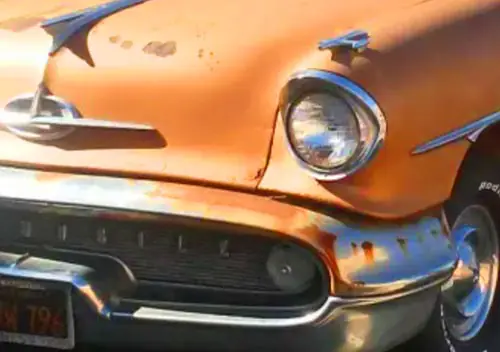
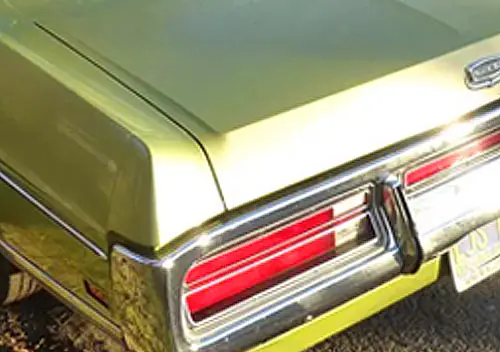
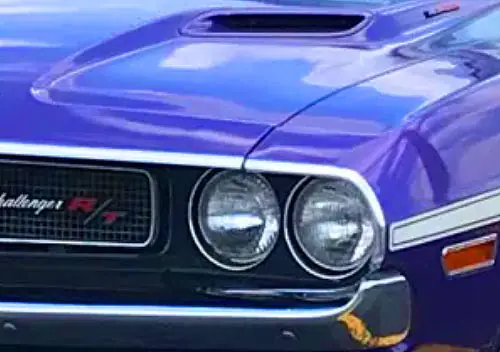


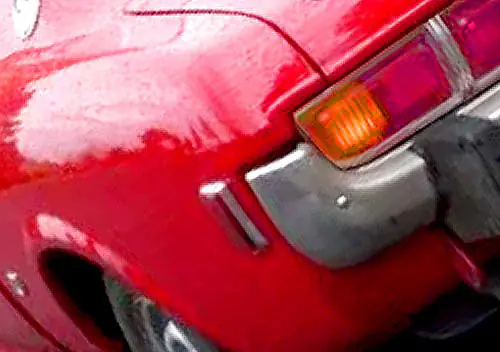
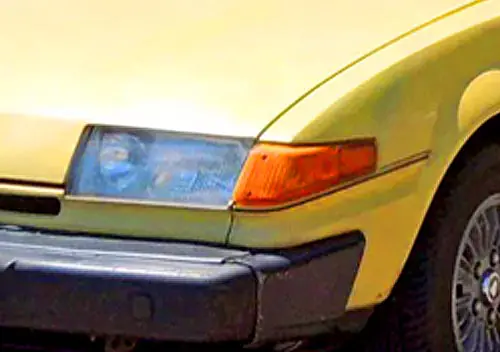

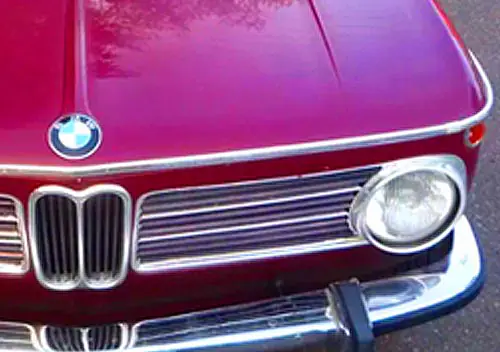
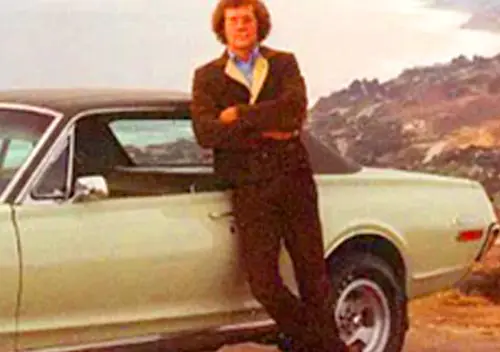

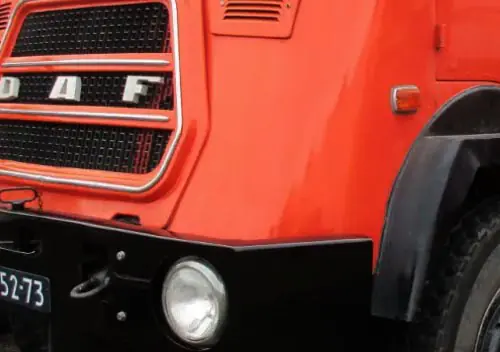
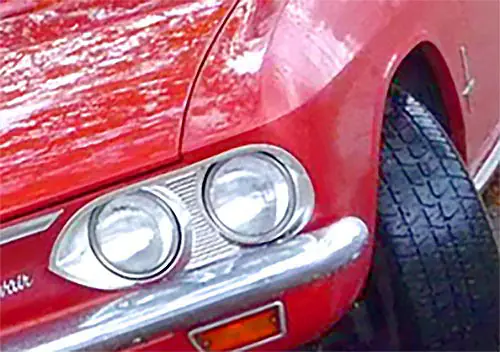
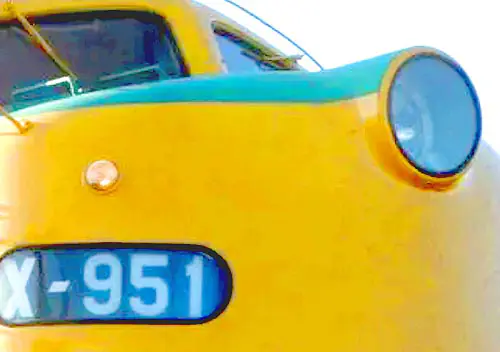
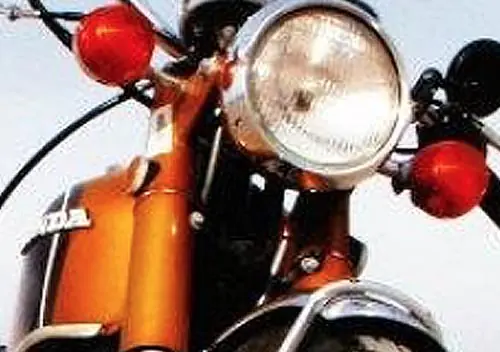
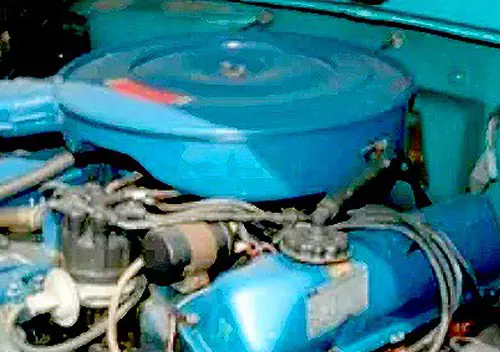
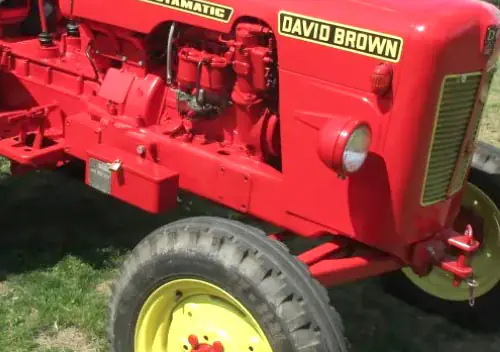


I think I’d take the Chrysler as well, and my first runner-up would be the Olds.
Newport…4bbl engine, 4 speed, manual steering & brakes, only options the 4bbl and A/C.
It’s interesting that the car that had THE reputation back in 1965, THE desirability, and THE sales record was, at best, an incredibly mediocre car. Turns out that a standard-equipped Pontiac was definitely skating on the reputation of the GTO, even though it wasn’t playing in the same ballpark.
Meanwhile, a car that was desirable but not that greatly thought of back then (Chrysler) was the best of the bunch.
And they probably keep that ranking today in the collector market.
Image is everything.
And I’d definitely go for the Chrysler, which is the way I felt about the cars when they were new, due in no small part to a family friend’s New Yorker four door sedan in metallic green that was often in the family driveway.
Extra Care in Engineering wasn’t just a tag line.
Agree! This was when a Mopar was still a rational (and often superior, as this road test proves) alternative to GM or FoMoCo products.
I remember reading that Chrysler had engineered its 1965 full-size models to be better than the GM and Ford competition and that they achieved that goal.
Huge sales gains were made and then the bean counters at Chrysler started working their magic.
I had my grandfather’s 1965 New Yorker 4 dr hardtop w/ bucket seats in HS and I can tell you it was a much better car than my dad’s two Pontiacs. You could actually push start the New Yorker auto because it was over-engineered. They took that away in a year or two.
I’d take another Chrysler please.
It was the all about the looks. It’s just standard GM fare otherwise. And checking the box for the HD suspension took care of its major shortcoming.
Style sells. The GM cars here look a generation newer than the Merc and Chrysler, and at a time when people were accustomed to styles changing fast and a desire not to be seen as falling behind was common, it made financial sense not to buy an already-dated car.
Interesting that this should be the case even though all three companies’ full-size lines simultaneously went to curved side glass for 1965. I think the difference is mostly in the greenhouse styling rather than below the beltline.
One difference is that GM achieved a cleaner look for its hardtops and convertibles, with only one bright metal strip at the front edge of the rear side window, just like its ’64 intermediates; Chryslers had two (adding one at the rear edge of the front window), whereas Ford retained full-perimeter metal frames around each window, even on hardtops and convertibles – very old-fashioned-looking.
It’s also the windshield shape that makes a huge difference between the GM cars and the others: The tops of the windshields of the Fords and Chryslers remained mostly a horizontal straight line, curved only at the ends, whereas those of the GMs changed to a constant-radius curve from one windshield pillar to the other.
Those frameless GM side windows looked great, but there were regular customer complaints about water leaks and wind noise, because they didn’t seal tightly against the rubber trim. We had a 1967 Oldsmobile Delmont 88 Holiday sedan, and we had to close the side windows tightly to avoid water leaks in hard rain. Even then, that often wasn’t sufficient to stop the leaks.
Geeber: they’re why I h8.
The Valiant Signet I have has one vertical aluminum frame with weatherstrip on each front window. Nothing at all on the rears.
I doubt that was a smart design even when new. A little door sag with age, time, rubber deterioration, body flex. A terrible idea.
The 66 Comet Caliente 2 door hardtop I had sealed very well and even at 8 years old at the time sealed against dust and rain effectively.
MT in a test of their 63 Signet convertible claimed that rain made it’s way into the interior via the side windows. I doubt that it was just because it was a convertible.
In a case where I’d literally be happy with any of them (BTW, Mercury’s unique “Breezeway” roof makes it more interesting than a same year Ford to me). I’m going to default and go with the LeSabre.
Hard to decide between the Oldsmobile Dynamic 88 or the Pontiac Catalina, 1965 was definitely the zenith year for the GM biggies, I’m surprised the Buick LeSabre had better acceleration than the Mercury Monterey considering the Monterey had a little more power yet a lot more torque than the LeSabre.
I personally thought the best looking year for the full sized Ford’s and Chrysler’s was the 1967 model years.
The peppier rear axle (final drive) ratio and the “switch pitch” torque converter in Buick’s automatic transmission prolly made the difference.
Also, FoMoCo’s 390 engine gave gobs of bottom end torque, but ran out of top end power rather quickly. This engine could be “woke up” with aftermarket parts; but was always somewhat of a top end “dog”.
Newport, hands down.
Second would be the Mercury (yes, my bias is rearing its head) but it would have to be the non-Breezeway version.
On both I would want the 4 bbl carburetor.
Agree on the 4 BBL carb options. As mentioned in this road test, all the “regular gas” 2 BBL engines often carboned up on the leaded gasoline of this time period and would require mid range “Ethyl” gasoline or even Premium gas to avoid sounding like a coffee can full of marbles being shook up. So, having a “Premium Fuel Required” 4BBL carb engine wasn’t that much more of an expense.
Also, the thrill of feeling and hearing the secondaries of a 4BBL carb of this period “Kick In” was a sensory joy in these otherwise dull cars…as well giving an added jolt of acceleration.
May parents owned a 66 Mercury Montclair for more than 10 years and it never suffered from carbon build up. No pinging, no Ethyl was ever used. And I drove it many miles myself.
Granted it’s possible but I wonder just how wide-spread it actually was.
I don’t remember carboning up being such a common issue back then. We never had it on any of our cars, and I worked at a gas station, and rarely saw someone put anything but regular in a car designed for regular gas.
Carboning up was more of an issue in the 20s, 30s, and 40s. Maybe it was an older writer?
Ahh, could be Paul. I’ve consumed so many rags over the years and reading that was a surprise.
“It’s carboned up” was always right up there with “it’s got a bottom end knock,” neither term meaning anything.
Speaking from my garage days, which included plenty of 60’s cars, when a car was pinging like crazy it was usually due to some shade tree bozo advancing the timing too much to “save gas.” That or it was something like twenty years old and had its OEM high tension wires
Each of these cars in 1965 offered large V8 engines in standard, or no-cost optional, regular fuel form and actually ran quite well on the cheaper fuel – which was 4 cents per gallon less than premium. The cars with standard regular-fuel engines were the Chrysler (383/270) and Mercury (390/266). The Oldsmobile had the no-cost option 425 2-barrel regular-fuel engine (300 hp compared to 310 for the standard premium-fuel engine – the 280 and 300 hp figures in the article were incorrect) while the tested Pontiac had the high-compression 290 horsepower 389 2-barrel which came standard with automatic transmission and required premium fuel (article was incorrect that this engine could run on regular – certainly not with a 10.5 to 1 compression ratio) – the no-cost option with the automatic was the same regular-fuel 256-horsepower 389 that came standard with stick-shift cars. The Buick’s engine was the 250 horsepower 300 4-barrel premium fuel burner that came with the LeSabre 400 option which included the 3-speed Super Turbine 400 transmission (as opposed to the 2-speed Super Turbine 300 that came with the standard regular-fuel 210 hp 300 2-barrel). Although premium fuel cost about 4 cents more per gallon than regular in 1965, a lot of new-car buyers wanted the performance of a large displacement V8 but did not want to pay more at the pump for premium or super-premium fuels, so these cars (except the Buick) as equipped were representative of most examples found in dealer’s inventory – very few such buyers in this class went for the extra-cost high-performance engines such as the Pontiac 421 HO with the 376-horsepower Tri Power (3 2-barrel carburetors) or the Mercury’s Super Marauder 427 with 425 hp and 2 4-barrel carburetors, the latter truly a racing mill which was unavailable with options overwhelming preferred by buyers in this class including automatic transmission and air conditioning or even power steering and brakes. Also remember that octane ratings in 1965 were much different today as it was determined by the Research octane method which was higher than today’s Pump octane measurements – back then almost all gasolines were still leaded fuels (except Amoco’s premium, a lead-free fuel) with Regular at 94 octane and Premium at 100 octane. Sunoco then had Custom Blending pumps which offered 8 grades of gasoline with octane ratings of 91 to 103 including subregular Sunoco 190, regular Sunoco 200, mid-grade 210, 220 and 230; premium 240 and super-premium 250 and 260.
Thanks for posting this Fun reading. I say Pontiac for me.
Interesting that disc brakes were not offered on the Big 3 cars. Studebaker offered front discs as an option starting in 1963 (standard on Avanti), and AMC offered them on their larger cars starting in 1965 (standard on the ’65 Marlin). Crosley had 4-wheel discs standard back in 1949 but those would lock up from road salt and were subsequently abandoned.
Road Test makes a good point about the tires, cars tended to come with seriously undersized/overloaded tires back then unless you sprang for bigger optional shoes.
We used to have the previous-generation Catalina, a 1964 4-door hardtop. It was high on style and had good power with the 389 but handling and brakes were the pits. The Roto-Hydramatic “Slim Jim” transmission did not have a great reputation but ours never gave us any trouble.
According to “The Inflation Calculator”, GM’s $400 A/C price equals $3325 in today’s money! How is that possible?
Still, I could not imagine not having in dash factory A/C in any full sized car of this time period. (Chrysler offered front AND rear A/C in their station wagons.)
Buick always seemed to have better brakes than the other models in this time period. This was back when each division had their own autonomy with engine, transmission & chassis development.
Although not as sleek looking as the newly restyled, Bill Mitchell designed GM beauties, for a “people hauler” car my choice would be a 383 4BBL, TorqueFlite automatic, factory A/C Chrysler Newport, with as many heavy duty options I could squeeze into my price limit.
That’s MY opinion and I’m stickin’ to it.
I think air conditioning is actually one of the most significant innovations of the 20th Century. It was painfully expensive when it was first introduced, but as the prices came down and it became more ubiquitous, it truly changed life in the U.S.
For my family in the Deep South, A/C was a Godsend. The first car my parents bought in New Orleans with factory installed A/C was a ’63 Buick LeSabre. Though the car predated me, I still remember my parents talking about how awesome they thought it was just for the cooling ability. My mother said it was like “they had died and gone to heaven!” The car was that comfortable. My parents also installed wall-mounted A/C units in strategic locations in the house–which they considered a huge luxury.
Later, they converted to central air, and the novelty wore off to the point that we took climate control completely for granted. But the impact really was profound, including the rise of the U.S. Sunbelt states with commensurate dramatic shifts in population settlement.
I’m not originally from the South, but have lived there for 35 years now…in my family, our first air-conditioned car was a ’73 Ford Country Sedan (odd name, it was a wagon, not a sedan) which we also had “decadent” options such as power locks (still manual windows) and AM/FM stereo (nice for long trips).
My family lived in Virginia at the time, which isn’t in the deep South, but gets pretty humid in the summer…and we were camping back then, with some trips to Florida and points South, so we really appreciated the air conditioning. On one trip we spluged and stayed at a campground in Walt Disney World (it had just opened a year or so before) which had air conditioned restrooms, which we thought was very unusual, but I think they also charged $12/night, which was 3 or 4 times as pricey as we were used to paying for “normal” campgrounds.
Eventually we traded in our non-airconditioned cars when we moved South, my Dad had a Dodge Omni which got traded in on an air-conditioned Dodge 600 after a few years, the city we live in wasn’t as busy as it is now, so even though it was hot, you could at least count on forward motion most of the time, so you’d be a bit sweaty on the way home from (school or work). I similarly kept my non-airconditioned VW Scirocco for about 4 years after moving South, but my first airconditioned car was a (used) ’86 VW GTI. None of us would consider ever buying a car without airconditioning, but in the meantime almost every new car now comes with airconditioning so we don’t have to worry about it (except to fix or charge it, I had a new compressor put in my car last year, but it went 15 years without needing AC work, so I figure it is OK. I think I’d forgo any other option (manual windows or locks, no problem..manual transmission is a slog with the traffic, but still do-able, but now we almost think of AC as being a function needed much as the basic transportation subsystems like engine/transmission/brakes, it is high up on the list of things that needs to work or be fixed if it doesn’t function.
Back to the model choices, back in ’65 my Dad was an Oldsmobile guy, (albeit midsized, having purchased an F85), but I’d also go with the Chrysler myself, though I do like the Olds as well, I’ve heard the old Delmonts were pretty reliable too.
Oh absolutely. I can attest to the quantum leap in comfort I experienced going from a non air-conditioned family car to an air-conditioned family car here in sub-tropical Brisbane.
Winding down the windows doesn’t compare when the air is hot and thick. Good A/C is where it’s at!
Meanwhile, here in Vancouver, Soviet Canuckistan, I get along just fine with a Kia Rio with no air conditioning. Parking in the shade helps a lot!
My policy is to buy a car with usual expected equipment so it can be resold easily. I would have AC as a coastal resident even if I never turned it on. You never know, you might want to sell your car for some reason (eg- need cash for business start-up). Maybe you have a keen buyer in Alberta who really wants your car, no AC becomes a deal breaker.
For this reason, I would feel compelled to get all the connectivity-USB-Bluetooth crap, for example, even though i have no use for it, the next person will.
When I bought my last car in Korea, I was offered a screaming deal on a Kia Forte with 3000 kms, basically brand new with the plastic still on the seats. Battery was dead from sitting for 2 years. It was a stick, which is why it had been sitting that long. I passed on it because I knew I could never unload it without taking a bath, if at all. Nobody wants manuals here anymore, like most of the rest of the world, I guess.
Oh yes, GN. Once one had AC on a new car, one had “arrived”.
The first air conditioned car my family had was the 72 Ambassador.
The 63 Valiant I have has a knee knocker aftermarket one that was in it when I bought it in 1981. AZ car.
It has been retrofitted for the new refrigerant and is set to go as soon as it’s hooked back up. [Long story: mechanic blew my electrical replacing an ignition switch amongst other things that happened under his watch. I got the car back before anything else could suffer any more collateral damage ].
Find a car now with out A/C on ether side of the Pond?. In nearly 60 years the additional cost has been reduced from 20% of the new car price to.. well 500 $ and £ . Once considered a useless luxury in the UK, buyers found its a must in humid summers and defrosts the windshield in double quick time.
As for just for Southern states only. You been to New York City and Toronto in the hight of summer.?. Phew!..humid.. humid…
That’s a great comment. Never new that, but it makes so much sense how the south has grown
Having grown up in a neighborhood that seemed GM-friendly, and given my dad was an Olds guy, I would have to take the Olds 88, light green with dark green vinyl seats. The basic equipment level of the test cars coincides with the way my dad ordered his cars too…he would have sprung for the vinyl top though.
In my mind the Catalina isn’t in the same league as the others…I always perceived that Pontiac is a fancy Chevrolet, and a step down from Olds and Buick.
More comparable to the Dynamic 88 and LeSabre in lavishness was the Pontiac Star Chief, which rode the longer 124-inch wheelbase of the flagship Bonneville but used the same standard/optional drivetrains as the Catalina. The Star Chief came with a plusher cloth and Morrokide (Pontiac’s trade name for vinyl) or full-Morrokide interior, padded dashboard, deluxe steering wheel and other items included as part of the Catalina’s decor group option (full wheel covers, door frame and wheelwell moldings, custom pedal trim plates, etc.). However, the Star Chief was only offered in two models, four-door pillared sedan and four-door hardtop. A comparable interior trim was offered on the shorter-wheelbase Catalina as the Ventura package.
It should come as no surprise here that I would choose the Newport as well. This generation of Chrysler C body would be a high water mark that Chrysler would never again (IMHO) attain.
The 65 Mercury never did it for me, but the 66 I found attractive. Second place for me might have been the Oldsmobile, though I never found it particularly good looking either. But that 394 or 425 and THM would be a tough combination to beat.
The 394 was last seen in Oldsmobiles in 1964. For 1965, it was replaced by the 425 for the Dynamic 88, Delta 88 (Super 88 in 1964), Starfire and Jetstar I along with the Turbo-Hydramatic transmission replacing the not-so-stellar “Slim Jim” Hydramatic [the Jetstar 88 retained the f-85’s 330 inch V8 and Jetaway automatic, along with the f-85’s smaller 9.5-inch brake drums vs. the 12-inch drums in other big Olds models]. The 425 was offered in several horsepower ratings: 310 for the standard 2-barrel Ultra High Compression premium-fuel mill in Dynamic and Delta models, 300 for the no-cost low-compression mill for both series’ that was also the “World’s largest regular-fuel engine” in 1965, the Ninety-Eight’s standard 4-barrel UHC engine rated at 360 hp or the 370 hp. mill with dual exhausts and dual snorkel air cleaner that was standard on Starfires and Jetstar Is. Both 4-barrel 425s were optional on Dynamic and Delta models while the Starfire engine was also option on Ninety-Eights.
Catalina 421 with a 4 speed…
Ouch – I winced when they referred to the Catalina’s Pontiac siblings as “Indians”
Times change. I cringed at their expression “the little woman”. If I called my wife that she’d promptly rearrange my tailpipe. Back then Mercury’s advertising slogan was “The Man’s Car”, so holding certain demographics in contempt was Detroit mantra.
Funny how times change – and how we now have to walk on eggshells no matter what we say and do.
Hey I’m feeling this bias in the opposite direction: I have certain cognitive issues which limit me to repetitive tasks at work, so a job as a switchboard operator or receptionist in an office would be perfect for me!
But the industry still seems to think that women are best for those roles, particularly young, not always college-educated, and not always white(attributes that describe me precisely).
I would take the Newport
Chrysler for me as well, although my real pick would be a well optioned Dodge Polara with the 383. My father had several Polaras in the Sixties, including a ’65, and all three were great road cruisers.
I used to have a ’65 Buick (Wildcat) which was almost identical to the LeSabre. The ride was slighly more firm and less-isolated than what you eould expect. The dashboard was cool, with intricate detail.
Of the choices offered, I would go for the Mercury. The clean and unconventional look is appealing.
A step up from the LeSabre and a better buy in 1965 was the Wildcat which got the larger 401 cid V8 (325 hp) standard and the 3-speed Super Turbine 400 transmission – plus the longer 126-inch wheelbase shared with the C-body Electra 225. Though the 401 was a high compression engine that required premium fuel, it was a bit better suited for the big Buick than the “small” 300 engine found in the LeSabre, plus the Wildcat had bigger tires. Inside, the base Wildcat also got the same base bench seat interior as the LeSabre Custom while the more upscale Wildcat Custom got an even plusher trim with either notchback bench seats w/armrests or, optional at extra cost on coupes and convertibles, bucket seats and console.
Maybe it’s just me but this review seems to damn with faint praise. “If you don’t order your car correctly, it will be a no-brakes wallowing death trap that will blow a tire and kill you.”
It’s not just you, it’s clearly what they’re saying.
They’re also saying all these cars have shitty brakes, bad tyres and are too heavy. And that the middle front seat is a joke.
They also imply that the Chrysler is the better of the bunch from a driver’s standpoint.
It’s interesting as far back as ’65 that people were saying this, yet the full size car would get even bigger on the next redesign.
Who listens to the snobbish rants of a small clique of automotive journos? Nobody, then a few, then a few more… Then the economy goes in the red, oil prices go through the roof and Detroit is caught with its trousers down trying to peddle shoddily-built 5000 lbs underpowered land yachts. Toyota, VW, Volvo et. al. laugh all the way to the bank and Detroit becomes a ghost town.
But these things take time. It’s no good being right about what’s wrong when things are going well, which they very much were from Detroit’s point of view in 1965.
You’re absolutely correct!
Some people were saying it a lot earlier than that. FWIW, 1965 was a turning point of sorts, due directly to Ralph Nader’s book. Tires started getting bigger, and GM started working on the handling. Although the 1970s GM cars were bigger, they did handle and brake better, and they had decent-sized tires, although still not radials until the mid 70s or so.
https://www.curbsideclassic.com/automotive-histories/how-gm-nickled-and-dimed-americans-to-death-part-1-undersized-tires/
I wonder if this is why interior materials quality went down during this period as well- the accountants had get the money for those tires and suspension components from somewhere.
https://www.curbsideclassic.com/curbside-classics-american/curbside-classic-1973-oldsmobile-delta-88-gms-deadly-sin-154/
Yes, along with other issues. The biggest single one was inflation, especially the rise in wages and benefits. Manufacturers were really struggling with costs more and more. As wages went up, they had to compensate with reductions in materials and labor-intensive processes. it’s a process that’s never ended, but really started to be a major issue in the mid-late 60s.
Agreed, but I would add that safety and emissions laws/regs led to significant budget categories that had never really existed before. Also, many of the things we old-car guys liked about the older cars (like all of the beautiful chrome-plated castings all over the interiors) could not withstand the new safety standards. It is tough to look at cars of the 1965-75 period and separate what came from style changes, what came from safety advances/requirements and what came from cost cuts.
It’s really a shame that the Detroit automakers let a lot of technology go stagnant- by the time OPEC started embargoing and safety/emissions standards were ratified, they had a lot of catching up to do, never mind inflationary and labor pressures. Really a perfect storm.
Junky bias ply tyres ruined a lot of cars we could get too and the difference when upgraded to radial tyres made huge differences New radials and a suitable wheel alignment turned awful understeerers into much nicer to drive cars ok the steering got heavier at parking speeds but that was about the only drawback so people just learned what should have been taught before they were let loose on the roads dont attempt to steer unless the vehicle is moving.
We had two 1965 Bonnevilles – wagon and convertible – with standard drum brakes, too-small wheels, bias-ply tires, and five sets of lap belts.
They really were potential deathtraps, although stylish. It took a long time for cars to reach their current passive-safety capabilities.
If today’s Republicans had been in control of the federal government at the time, the 1971 Pinto (to take one notable example) would have been even less safe than it was.
Not to get political here, but I’m not so sure that the Pinto’s gas tank issues were in any way covered by then-current safety rules. I rather doubt it.
Yes, there were safety regs in effect at the time, but they addressed other issues, like seat belts, safer dash boards, etc. So yes, the Pinto and all cars were safer than one from before regulations took effect, but as I said, probably no effect on its gas tank location/protection.
I meant that the rest of the car would have been even flimsier than it was, because the car company lobbyists who dragged their heels and complained about the claimed negative effects of any safety improvement (as in fact they did, over a period of decades) would have consistently prevailed.
The Pinto’s safety record was in line with other small cars of that era. It really wasn’t a death trap, except in the sense that all small cars of that time were death traps.
’71 Vega vs ’71 Caprice.https://www.youtube.com/watch?v=68sYf3lo5Q4
’71 Impala vs ’72 Pinto (rigged) https://www.youtube.com/watch?v=_stpBzOAcWw
’79 Pinto/Bobcat head on test https://www.youtube.com/watch?v=f22MAEUOr4A
@ 67Conti
They all look like bad news…
I watched the first Vega vs. Imapla crash and thought it looked like the Impala clearly came out the “winner” between the two, but a quick search shows a similar slightly offset test with another Vega and the Impala in that one gets absolutely mangled along with the Vega. The crash dummy is still flying toward the dash as it plows the Vega aside. It just confirms to me auto safety back then was good if you could say “Yeah, the guy in the Vega died, but I will never walk again”.
As the owner of an ’86 Jetta it’s sobering to see this high speed offset crash https://www.youtube.com/watch?v=CyzCswJ_tkk
There was on you tube video of Pinto and Vega crashing into LTD and Impala crashing head on, both small cars crushed to the B pillar while the full sized cars still look OK, but I can’t find it anymore.
The Pinto was maligned for its fuel tank location, which was in the same location of every mid-size and smaller vehicle in the market. The infamous accident in Indiana that triggered all the attention had lots of situational tragedies that would have inflicted any other aft-of-axle-fuel-tank vehicle.
The driver of the Pinto had just filled the fuel tank, but forgot to put the fuel cap back on. Upon remembering the omission, the driver stopped the vehicle when on the freeway. Visibility was very poor due to weather conditions. Consequently, the driver erred in stopping the vehicle within a traffic lane (not on the shoulder, as intended).
A full-size van ran full-speed into the Pinto. All other aft-of-axle-fuel-tank vehicles would have behaved the same, particularly without the fuel cap. Never reported, a doobie was found on the floor of the van. The van’s driver dropped it, and was bent over…reaching for the doobie when he struck the Pinto.
What really got Ford into trouble was an internal engineer’s report that noted the risk of a fuel tank puncture when crushed against the rear axle. Like every other OEM, Ford chose not to act. But that engineer’s report was a smoking gun. That’s too bad for both the occupants of the Pinto and for Ford, because the Pinto was a much better quality vehicle than the Vega or Gremlin.
Shortly after this, Ford added tether straps to its fuel caps. When fuel injection emerged in the 1980s, Ford uniquely added an inertia cut-off switch. Lessons were solidly learned.
Does anyone have a clean 1972 Pinto glass hatch with a 2.0L and 4-speed manual? I’d confidently drive one!
The Pinto gas tank technical service bulletin (TSB) was more involved than a simple gas cap tether. IIRC, it involved a plastic shield installed between the rear axle and fuel tank, with the idea being that, in the event of a rear end collision, the shield would cause the gas tank to deflect downward instead of straight into the rear axle.
The “Myth of the Pinto Case” written by Gary T. Schwartz for the September 1991 issue of the Rutgers Law Review sets the record straight.
It shows that the Mother Jones article, which got the entire ball rolling, overstated the number of fire-related deaths in Pintos, and that the supposed “smoking gun memo” drafted by Ford did not focus on the Pinto. It was a cost-benefit analysis of future safety regulations that the federal government had asked Ford and other auto manufacturers to provide. (The court, in the Grimshaw case, thus did not allow the memo to be admitted as evidence. It had nothing to do with the Pinto.)
A comparison of overall death rates for the Pinto with other small cars of the era shows that its safety record was slightly above average. If we look only at fire-related deaths, it was slightly worse than average. Hardly the makings of a death trap.
Thank you. Hard to get the facts out when the myth has grown so large and toxic.
I read that book “Reckless Homicide” as well.
Mother Jones definitely had an agenda.
I would choose the Chrysler Newport w/factory A/C first, followed by the Breezeway Mercury – such a cool option!
I can always remember the full-sized Chryslers, even into the 70’s, having been rated as the best handlers of the full-sized cars.
Thanks for the enjoyable post GN – made my day.
Curious. The 66 Mercury Montclair we had was extremely easy to parallel park as one could see all four corners of the car.
Mom could whip the thing in and out of a space, something she had difficulty with in the 71 Gremlin we had during the same period. Though the Gremlin was far smaller, the non-power steering provided no help in parking.
While she could park the Mercury easily she said she never felt like she had any control over it and that Fords always seemed “tinny”.
The first car she claimed she ever had under control was the 86 Calais I gave them [now my little brother’s].
Not getting how the Chrysler had “better” brakes when the figures used in the Road Test text claim 202.1 sq. in. which is well over a hundred less than the Buick at 320 and the Mercury at 330.
Help me out here, y’all: typo or what am I not understanding ?
Take away the Breezeway and I’m not getting the “clunky” styling reference to the Mercury, GN. It looks quite similar to the Newport and I’ve often mistaken the two on the road over the past 50 years.
No offense meant. You bring the old road tests to life. Very valuable resource. Many many thanks.
We also had a 70 Olds Delta at the time: 455 and HD suspension. It rode like a truck.
I always preferred the ride in the Mercury as well as the quiet. It formed my benchmark for what I liked best in a car. Also: no carbon build up problems in over 10 years and regular gas only. Same with the 72 Ambassador.
Now rust, that was another matter….. I honed my bondo skills every summer after the first 4 years.
The Mercury was $3600 out the door, $100 a month for three years, automatic, power steering, whitewalls & heater.
Many many trips across the country for Dad’s job and his 2 week vacations, fully loaded with wife and kids an luggage.
Tires would only last 10,000 miles back then and Dad cursed those cheap 2 plies that came standard in the Mercury. He bought better ones when the OEMs wore out.
Easy. As is almost invariably the case with Road Test, they bungled the numbers. The Mercury had 204 sq. inches of swept area; 225 for the wagons. And the Buick had 197.32 sq. inches. Does that help?
Yes, thank you. That’s a real editing problem !!!
On the Mercury styling, the Breezeway looks awkward to me, and also dated, since the feature and roofline first appeared in 1957. Even with the more conventional roofline, I’d personally still rank Mercury last among the group tested. In isolation it’s not bad, but against the competitors it looks awfully rectilinear, and the front fender turn indicators are a bit over-the-top.
The Chrysler styling in many ways feels like an evolution of the look Elwood Engel first established for the ’61 Lincoln Continental. While not nearly as sleek and flowing as the Bill Mitchell GMers, the big Chryslers had nice side sculpting and detail work. They didn’t look nearly as modern as the GM products, but were very well done versions of existing styling themes. That approach seemed to be Engel’s calling card at Chrysler. I personally love the ’68 Dodge Charger, for example, but it is nothing more than a well-executed rehash of comfortably established styling cues.
One of the regulars at local shows is a Mercury Breezeway from a couple years before this, in pale (and slightly turquoise) blue. It looks like the result of close proximity to magical teenagers causing the “Harry Potter” Anglia to go through puberty and a growth spurt.
GN: Thanks, I get it now. The Breezeway was pretty gimmicky and right out of the 50s. Makes sense.
I have a bias towards the Mercury as my parent’s 66 was my first automotive love.
The Chrysler and Mercury use similar themes. I always thought the Chryslers more brash though.
Ironic that Chrysler would pull off the Continental look better than the Mercury
with it’s attempt to directly play off that connection for 65/66.
Understandable they’d be at a disadvantage with Engel at Chrysler
Keep in mind that the superior handling of the Chrysler was specifically because the standard suspension was firmer, and more comparable to the optional HD suspensions on the other brands. And Chryslers were faulted by some who didn’t like a firmer ride compared to the others. And in 1966, Chrysler responded to that criticism by softening up the settings on its full size cars (Plymouth and Dodge too).
If you read some comparison tests of the ’66s, like this PS test: https://www.curbsideclassic.com/blog/the-best-big-car-of-1966-the-perpetual-debate-gets-some-additional-ammo/
You’ll see that the tables have turned, and the standard-suspension Impala gets the nod in handling precision because the Fury had a softer suspension for ’66.
The point being: yes, the ’65 Chrysler’s standard suspension was best for handling, but the GM cars could all be ordered with optional suspension packages to likely equal or exceed it, as the reference to the Pontiac 2+2 makes clear.
Someone let me have their ’68 Catalina coupe for a couple of months while they were out of the country, and it was a horrible wallower. Of course it was eight years old by then, and that undoubtedly didn’t help. But it was dangerous in anything but straight-ahead freeway driving. And the brakes totally sucked too.
Two random observations:
1) Dodge had apparently drifted far enough down into Plymouth territory at this point that it was excluded from the comparison – note the reference in the introduction.
2) I was surprised to see that the LeSabre was only available with the 300 V8, with larger V8s exclusive to the more upscale fullsize Buick models. It looks like Buick went to this arrangement in 1964, when the 300 was introduced in conjunction with the new A-bodies (the ’63 LeSabre came standard with a 401 2bbl). LeSabre would continue to offer only small V8s through 1969, although displacement grew to 340 and then 350 cubic inches. If I ever knew that Buick did this, I had forgotten; I would have thought that the bigger engines were at least available as options. The 455 finally became available as an option in LeSabres in 1970.
It’s interesting that each middle-price GM brand approached the matter of using smaller displacement V8s in its B-body cars in the mid 1960s differently:
Pontiac: don’t offer small-displacement V8s in fullsize cars at all; stick with large-displacement V8s only. Small-displacement V8s are for intermediates.
Oldsmobile: introduce a new low-end fullsize model with the small-displacement V8 (the Jetstar 88); leave the existing volume fullsize model as is, with large-displacement V8s standard.
Buick: offer small-displacement V8s in the existing fullsize volume model. In fact, offer the existing fullsize volume model ONLY with small-displacement V8s, with larger-displacement V8s not even available as an option.
Ever since the debut of the full-size Dart for 1960, Dodge had been aggressively poaching sales from Plymouth (and Ford and Chevrolet, if possible). The Dart initially sold very well, but it also essentially killed sales of the medium-price Dodges.
It would be interesting to compare the prices of 1965 full-size Dodges to those of the competition. I’m guessing that they weren’t much higher than the prices of comparable Plymouths, except, perhaps, for the Monaco hardtop coupe, which was a special model on the order of the Pontiac Grand Prix.
Likewise, it was after the Dodge and Plymouth downsized for ’62 that Chrysler started pushing the “no jr editions” Newport to well-optioned-low-price buyers. It worked almost too well with Mopar loyalists and the full-size Dodge/Plymouth sales curve, especially starting in the fuselage era, reflected that and would’ve been even more dramatic without all the fleet sales that Extra Care in Engineering got them.
Dodge did compete in the low-medium with the larger (than 1964) 1965 Polara which came standard with the same 383 V8 as the Chrysler Newport, along with the step-up Custom 880 (the only C-body 1964 Dodge) and bucket-seat Monaco. Then about mid-year 1965, Dodge introduced a lower-priced Polara 318 4-door sedan which included the same 230-horse 318 V8 as the Plymouth Fury – this likely to give Dodge some competition for the Buick LeSabre and Olds Jetstar 88, and the Dodge was really a better car than those GM models as it had a larger engine and more standard horsepower than the Buick, bigger brakes than the Oldsmobile and … a 3-speed TorqueFlite automatic transmission (Olds only offered the 2-speed Jetaway in the Jetstar and Buick the Super Turbine 300 in LeSabre unless the optional 4-barrel engine was ordered, for which the 3-speed ST 400 was included). Replacing the old 1964 B-body Polara was the slightly smaller 1965 Dodge Coronet on a 117-wheelbase which was marketed as a standard car to compete against Impala and Galaxie, but was really an intermediate-sized car in the Chevelle-Fairlane-Tempest-F-85-Special class along with the 1965 Plymouth Belvedere (which was a facelift of the “standard” ’64 Plymouth). Though the Polara 318 sold well, the volume seller in the big Dodge line was the standard Polara with the 383 V8, but Dodge in 1965 sold more Coronets and compact Darts than Polaras, Custom 880s and Monacos.
Catalina and Dynamic 88 for the best styling, LeSabre and Newport as styling runners-up, Mercury if one liked a car laid out with a T-square and right-triangle.
Dodge should have squawked because the Custom 880 wasn’t included in the comparison. If one didn’t mind giving up a few inches of wheelbase and the ‘prestige’ difference between them, the Custom 880 was a good alternative to Newport.
Segment classification were trickier then:
Lower-medium: Pontiac Catalina, Dodge Polara, Mercury Monterey.
Middle-medium: Olds 88’s, Buick LeSabre & Wildcat, Chrysler Newport & 300, Mercury Montclair, Dodge Monaco.
Upper-medium: Olds 98, Buick Electra, Chrysler New York and Mercury Park Lane.
At any given time fifty years ago, one could spend considerable time comparison shopping this segment……but most bought based on styling and which dealer they perceived as giving the best deal and that they ‘trusted’ as honest.
I think the Dodge was expressly left out because it was actually $2 more expensive than the Chrysler that year. Why bother when the article’s focus is on prestige?
The Dodge Custom 880 is fascinating. Due to the 1962 downsizing disaster, Dodge got a Newport with a Dodge front end, and Chrysler dealers supposedly went berserk. A real irony, considering how the Newport had cut into premium Dodge territory. But by 1965, Chrysler had managed to sort their model line-ups out enough that the Custom 880 was irrelevant and would be its final year.
The bottom line is that rather than getting conquest sales from Ford or GM, it seemed like Chrysler’s divisions were always cannibalizing sales from each other. Not exactly a solid business model for the long term.
I’d choose the Newport, but I might be a little bit biased here, having been immersed in Newportology for the past few weeks. It’s interesting to compare this test to a similar (though much less detailed) comparison test in Popular Science in 1966, in which they compared the Newport, LeSabre and Montclair. PS also concluded that the Chrysler was the better drivers car; it was an interesting article to read.
As part of last week’s Newport article, I had thought of including outtakes of ads and brochures from the Newport’s competition, since the themes seemed so similar. It wound up being too much material for one article, but I still find it interesting. Here is the LeSabre brochure outtake (from ’66) that I had considered including. Replace “Newport” for “LeSabre” and it could easily be Chrysler sales copy.
Grandparents were loyal to Buick in the 60’s, but looked at a LeSabre as a ‘Chevy’ clone, and got Electras. I’m thinking they wanted the big motors and towing capability.
Liked to take road trips and had a vacation home in Northern WI, with boat.
Even when new, this year Mercury was known as the prototypical “Old Man’s/Old Ladies’ Car”.
IMHO
Pontiac is the best looking.
Mercury is the most unusually styled.
Chrysler looks the the most out of date stylistically.
Oldsmobile is the most anonymous, looks like a detectives sedan used for tailing a suspect.
The Chrysler is a great choice, but that photo shows why I would buy it as either a four-door hardtop or at least the six-window sedan. It really does look very stodgy.
The Mercury’s Breezeway rear window and greenhouse do look strange, but the arrangement offered genuine benefits in ventilation during a time when air conditioning was not yet universally ordered, even on full-size cars.
Interesting that the reviewers picked up on the flexibility of the GM frames, particularly versus the Mercury frame. If I recall correctly, GM did beef up the frames for 1966, although they were still behind the Fords in overall stiffness.
Were those body-on-frame cars really so floppy, that they needed to test whether the doors opened with one wheel on a ramp?
Yes!
It’s true, sadly. I remember seeing other tests just like that one, and having doors jam wasn’t uncommon.
I agree with John. A friend’s dad remembered a guy at his workplace who bought a new 60 Chevy convertible. He had to park it on level ground or the door wouldn’t open.
Stephen:
I once owned a low-mileage(read: ESTATE SALE!! Yes!) 1981 Buick Century Limited, and it took me some time to notice that the door weatherstripping was not firmly contacting the body at all points around the door frame. (In those days the strip was on the door, not on the body and door like today) No wonder it was so drafty in there.
So I went and got a Torx and moved all 4 door strikes in, some almost 1/8″inch. Not only was the car quieter even on highways, and the heat and A/C more effective in their seasons, but I can *swear* the body on that car felt somewhat stiffer! Almost ‘German’ I thought, at the time, as I Imagined how an Audi or BMW should feel! It even helped the handling to a degree, with more responsive and self-centered steering. Additionally, the car actually coasted for once, without me having to give it gas all the time. And the only time I felt a breeze was with a window open. LOL
I don’t even need to mention what happened when I replaced the ancient GM stock shocks with a set of Monroes. Actually miss that car! Called it the rolling dorm because in college it was the ride of choice for my dorm-mates to schlep to the regional mall 10 miles outside of campus! 🙂
2+2 with the 8-lugs or the Chrysler with HD options. I like the buick but that dash..ugh
The coke-bottle styling of the GM cars is very appealing, but I think the Chrysler and Mercury boast more elegant styling with greater “snob-appeal”. It’s no secret that I’m a big fan of the 1965-1968 Chrysler C-bodies, so the Newport would probably be my first choice of the bunch.
On another note, it’s astonishing from today’s perspective just how sexist much of the speech is in this article: “Perhaps Dad would be delighted with Chrysler’s floor-mounted three-speed manual transmission, but Mom just wouldn’t stand for it.”
I know plenty of women who drive manuals, many of whom were around at the time of this publication. We’ve come a long way, though sadly, still not far enough towards gender equality in this country, even a half-century later. 🙁
Technically, I’d have to agree with you that the comment you reference is sexist to a degree, but not particularly egregious, especially not in the context of 1965. Many people of both sexes would have understood the comment, and generally agreed with it.
While the reasons were undoubtedly varied, a lot of women born between 1900 and 1940 simply elected to not drive, or were licensed but avoided it. And, a major reason for many was that cars were burly, crude machines that were a handful to drive.
Social mores and the auto have evolved together for about 120 years now. As cars became less like glorified tractors, and features like automatics, power steering, and power brakes came along, marketers promoted these as women friendly for good reason – it was a way to get families to consider a second car if they could get more women behind the wheel on a regular basis.
The advertising from 1955 might be cringeworthy now, but it worked! My own grandmother, a tiny, petite, women, began driving in earnest when she started working around 1955, and she bought herself a 1956 Buick Special coupe with automatic and full power. Not coincidently, her next car was a compact Buick Special wagon in 1962. The smaller car with an automatic and power steering was much more appealing to her than the LeSabre my grandfather was driving. To make a sexist comment, it seemed like just about every driver of a smaller than full-size Buick in the ‘60s and early ‘70s was a woman.
Two of my aunts, born before 1940, never drove until their husbands passed, and by that time automatic, power steering and brakes were mostly standard on the sort of cars they were likely to buy. When I was growing up in the early 1970’s, just about everyone had an aunt, grandmother or great aunt that didn’t drive.
Women drive manuals today in cars equipped with power steering and brakes, not to mention fully synchronized transmissions. Those features make driving a whole lot easier, particularly for people with less upper-body strength.
In the 1960s, power steering and brakes were optional even on full-size cars (our 1965 Chevrolet Bel Air wagon had power steering, but not power brakes). The first gear in manuals were not yet synochronized on various makes.
My paternal grandmother was born in 1913, and never got her license until about 1950. Even then, she rarely drove the family 1951 Studebaker Champion four-door sedan, because it had a manual transmission. When my grandfather died in 1964, and she was faced with having to drive regularly, one of the first things she did was trade the Studebaker for a 1962 Ford Falcon four-door sedan – primarily because the Falcon had an automatic transmission.
My grandmother, born 1911, only go a license when she was 49, after my grandfather had his heart attack, and even then, she never drove, my father drove her around. I was not born yet.
My mom didn’t drive until around 1963 when she was almost 40, and dad bought our first Rambler wagon with the Borg-Warner automatic. She tried a few times, but the clutch pedals in our earlier Ford wagons (1953, ’58 and ’59) were like truck clutches. Mom just didn’t want to drive a car with a clutch that heavy. Funny thing, when Dad bought a used ’59 VW Beetle for a work car she loved driving that. Imports had light clutches and short-throw 4spd transmissions, for the most part. I drove a ’73 Gremlin with a 232/3-on-the-floor combo, and even that was unduly heavy then compared to a Toyota or Datsun at the time.
As far as equality, different strokes for different folks I guess. My sister was a woman’s lib nut in the late ’60s and used to harangue Mom about being equal to Dad and getting a job. Mom said running a household with a lazy daughter WAS a full-time job (touché!) and she already was superior to Dad – why settle for equal?
Yes that was a fascinating comment, my mother learned to drive in a 1936 Chevrolet coupe it was of course manual, I also doubt she got any imput into my fathers car purchases as a new car regularly simply was a luxury here very few people did that, I did know she didnt like a lot of the cars though when I bought well worn 61 Vauxhall Velox she told me “I miss Vauxhalls they were so nice to drive” my dad was addicted to new Holdens mostly because resale at low mileage got him better than new price a unique to NZ situation due to govt strangulation of supply and finance regs, depreciation simply didnt exist untill the car was worn beyond economic repair.
It strikes me that all these car are a deadly sin for one glaring reason – no front disc brakes as standard equipment, and from what I gather from reading the article, not even available as a option. And Mercury made their brakes smaller!
Ford and Chrysler rectified that issue the very next year, in ’66. GM discs came a bit later.
I come from a Mercury family, we had a Breezeway when I was a kid. Ours was a 1963 and I still think that the Breezeway idea is a great one. Not everyone loves A/C. Well, I do, but my sinuses don’t.
As a kid I remember popular opinion that Mopars handled well. The big GMs were lauded for their quiet, smooth ride. I think that if I were to be in the market for a standard sized car at that time, I’d go for the Pontiac Catalina with the heavy duty trailering options.
Now, if I could graft on the Breezeway rear window…
One thing worth remembering about these old comparison reviews (particularly full-size cars) is that, for decades prior to the Japanese onslaught in the seventies and eighties, domestic brand-loyalty was incredibly strong. It was passed down from generation to generation and, unless there was something significant, people invariably stayed with the same car brand they had always bought. The only change might be as one’s financial situation improved, they moved up within a specific corporation (the Sloan ladder, for instance). Otherwise, it was strictly the same division’s cars they’d always bought.
Gotta love that Newport!
That said, in the late ’70’s to early ’80’s, I drove a ’65 Olds Dynamic 88 in high school and early college. Picked it up for $100 from a neighbor. Rebuilt the engine (economy 425 2-bbl.) in high school auto shop and later performed rust repair (badly) with a paint job to top it off. It was a pleasure on the road and had more than enough power (although I always wished it was the 370HP 4 bbl. model). If I kept my boot out of it, 20 mpg on the highway wasn’t at all unusual. The cornering was about what one could expect for a boat of that era. For nostalgia’s sake, I’d like to have another one. There’s nothing quite like the Olds Rocket burble.
My grandparents had a 65 Newport four door hardtop in this gorgeous aquamarine color. Big, wide bench seats, with a 383 that emitted a high-pitched hum I could hear two blocks away almost. I always knew when they were coming to get me for a weekend of food, late night TV with grandma, and memories. Grandpa always drove with his right hand on the bench seat, and he’d listen to KYW1060 news or some AM sports station; he’d tell us not to talk so he could listen to the game from the car’s modest AM only monaural radio. If the Phillies did well, he’d slap the seat and yell “HEYYYYYYYYYYYY”. If not, he’d still slap it and say, “SHIT”!. I miss my grandpa.
The 65 Buick dash reminds me of the 53 Studebaker dash with its low gages. Kenworth trucks are like this too. They had to have been approved when they were just paper sketches. Noone in their right mind would sit behind a scale model and approve such a thing.
Other than some misguided soul’s idea that they look ‘cool’, I wonder if there’s a legitimate reason for low-mounted gauges. Maybe something like easier assembly on the production line due to the upper part of the dash being unadorned?
I tend to doubt that. My ’67 Mustang had those obnoxious low gauges too, and unless one was four feet tall with the seat pushed all the way forward – viewing them was impossible. A normal guy like me (5′ 10″) had them conveniently and infuriatingly blocked by the steering wheel!
In the 1960s, stylists ruling supreme. Tant pis.
I’d have had to have gone with the Chrysler. I’ve never owned one, but back in the 1960s they were considered a man’s car as opposed to the soft, cushy, gizmoed GM and FoMoCo offerings. Granted, the full-sized Chrysler wasn’t super-good-looking, but form followed function with them. (The 1965 Plymouth Fury I sedans were strikingly good-looking though, and devoid of the excess of chrome trim that plagued their higher-trim-level brothers.) Same with Rambler, actually. (The Ambassadors were bulletproof, back then, and VERY well-appointed – but didn’t have the cachet of the big boys’ upscale offerings.)
One thing, though…for the money one would spend on the Newport, an extra $400 would get you into a 300 and a lot of the Newport’s optional equipment was standard on the 300.
THAT was the best bang-for-the-buck you could get, back then.
I disagree regarding the 300. The one extra item of real substance, the 4-barrel 383, was $35.20 on a Newport so that’s hardly a sticking point. The rest of the extra equipment was mostly decor. Things like bucket seats, extra lamps, ashtrays and lighters, all vinyl seats, specific exterior trim, etc. You still had to pay for power steering, brakes, and heavy duty suspension on a 300, just like the Newport.
I really want to choose one of these cars, but I can’t. Even in 1965, brakes as bad as these things had should have been completely unacceptable. Disk brake technology was available, but the car makes didn’t want to spend the money.
Paul mentions the high inflation environment at the time, an era many of us do not remember. Wage growth was strong as the economy was booming at full capacity, mainly due to the Vietnam car. The big car makers were feeling the pinch of labour costs, and cheapened out their products to the point of danger.
I never bought the “the government regulations killed Detroit” shtick for one second, since ever other car maker had to meet exactly the same standards, and said standards kept a lot of people from being, well, dead.
As much as I would want to buy the Newport, the only car I would have bought new in 1965 would have been a Volvo Amazon.
The number of fatalities per 100 million miles driven in the U.S. declined steadily after 1966, when these cars were all on the road, so calling them dangerous by 1965 standards is a bit much. The overwhelming majority of people who drove 1965 cars – first as brand-new cars, then as used cars in various states of maintenance – lived to tell about it.
And it’s not as though the imports were much better when it came to safety. The Volvos and Mercedes were outliers even among imports when it came to safety. The most popular imports in the mid-1960s were VWs, with Toyotas and Datsuns rapidly gaining ground in the late 1960s. Those cars certainly weren’t any safer than what was being produced by GM, Ford, Chrysler and AMC. Safety issues simply weren’t on the minds of most buyers at that time.
So true Geeber. My family did massive numbers of miles, trips across the country many times in it’s 63 Dodge Dart wagon and 66 Mercury. And millions of families of the era did the same without incident.
I drove that Mercury myself for many short trips to school and back, for work, etc. and the brakes were perfectly acceptable as they had been for my parents.
And to this day, according to AAA in stats provided by NHTSA, well over 50% of automotive deaths are attributable to people being too stupid to wear their seat belts.
I guess, the only one I could see driving would be the Mercury, but that’s flawed. I like the styling for the most part, I think that the pseudo baby Lincoln Continental styling works well, but that roof. Man, that roof is just a huge dealbreaker.
Of course, Ford released a Marauder variant of the Monterrey that had a fast back roof instead of the breezeway style, and it works much better and fully realizes the aesthetics in a cohesive way. But considering that 65 was the last year for the Marauder before it’s brief reappearance in 69, I imagine that it would be too rare an option to consider.
Joseph, there was also a standard roof similar to the Chrysler Newport in the 2 and 4 door sedans and four door hardtops. Much more elegant.
The Breezeway was offered in addition to those.
Interesting that they reckon you don’t need the 425 horse 427 in the Mercury unless you’re towing a big trailer – I really don’t think this was the usage the engineers had in mind!
That comment threw me for a loop, as well. Did they not realize that offering the 427 was intended only to homologate it for NASCAR? Solid lifters, non-vacuum advance dual-point distributor, 4-speed only, no PS or PB, unavailable AC, does not a trailer towing rig make.
Given that the Oldsmobile had a 425 and the Pontiac could be ordered with a 421, I can see making that mistake on a casual reading of the spec list. The 428 FE engine, which was a more natural fit for the consumer crowd in this segment, didn’t arrive until 1966.
A selling point (for me and others) not mentioned for the Chrysler was the (in)famous Mopar gear reduction starter.
The “Highland Park Hummingbird” starter is ingrained in my mind for this time period.
Somehow the “Nang-Nang-Nang-Nang” sound of a Mopar starter announced to the world: “This is a driver’s car, a man’s car” and not some Italian-ish styled, vaguely feminine (dare I say “pussy-fied” ?)GM or dull azzed old Ford/Mercury.
Other cars seemed somewhat lacking and “dishwater DULL” sounding without this starter grinding away.
(Yes, my third cup of New Orleans dark roast cawfee is bubbling thru me. Apologies those those I have possibly offended)
I swear, the sound of one of the laser beams from the martian machines in the classic sci-fi movie ‘The War of the Worlds’ sounds ‘exactly’ like the Highland Park Hummingbird. Unfortunately, the movie predates the introduction of the actual starter by less than ten years. Still, it’s a great way to hear the starter sound (and the movie is a classic, too).
It is really hard to say which car I’d pick with the knowledge of 52 years gone by. I have been kind to Chrysler in the years that they’ve had good / interesting product, despite a clouded reputation in prior years. So, going for the Newport is entirely plausible.
I simply love the styling of the ’65 Pontiac, but it takes the Bonneville engine, trim and fender skirts to really make me want one. The most basic Pontiac interior in ’65 was pretty basic.
Oldsmobiles, like this ’65, played a starring role in my youth, and hindsight about their power trains make them compelling.
I’ve always thought the LeSabre four doors were the most dowdy of the ’65 GM cars, and that goofy ’65 dash board, then, and now, would have kept me away.
I’d have to agree with many that the breezeway Mercurys have always looked a little odd, and by ’65 they no longer came as hardtops. But, then again, that rear window is way cool. But, perhaps a bit irrelevant in this price class of car as air conditioning was starting to see a very serious installation rate by ’65. Can you see I’m a bit conflicted here?
In the end, I can eliminate the Buick LeSabre for ’65, but can see myself loving just about any of the rest of these cars. From a quality, value and style standpoint, this is terrific group of 1965 cars.
Although i can respect the Chrysler, I’m not sure I would have pulled the trigger on one. They tended to suffer from poor resale, and buyers would invariably be stuck with Mopars after that, because only Mopar dealers would offer a decent trade-in value.
Given that, I would take the Olds, and find a dealer who was willing to order a Dynamic 88 with all the Police Equipment mentioned in the article. 425 in most powerful form with THM, PS & PB of course, AC & AM-FM. Tom McCahill tested one of these so equipped in 1968, and had nothing but gushing accolades for it.
Sounds good, in theory, but Good Luck in “The Real World”.
Car dealers of this time period were usually extremely resistant to “special ordering” a car for a customer. When they did, the “Dicker On The Sticker” amount was greatly reduced.
American car dealers have always wanted you to buy what they had in stock, off the lot.
My Father waited 9 (NINE) weeks for a special order ’66 Ford Country Sedan station wagon (390 4BBL, dual exhaust “Thunderbird Special” engine, heavy duty suspension, AM-FM radio, heavy duty cooling with 7 blade fan clutch, in dash factory Air Conditioning, tinted windshield only, wider rims and tires, power rear window only, remote control driver’s door mirror and matching passenger door mirror).
The only reason he got a half way decent price on it was because his employer purchased lots of cars from the Ford dealership over the years.
It depended on the dealer. My friend’s father special-ordered a 1968 Chevrolet Impala SS – four-speed on the floor, the bigger V-8 (I can’t remember which one), bucket seats, stock wheel covers, white wall tires and a black vinyl roof.
Their next car was a 1976 AMC Hornet Sportabout which was loaded with virtually option except the V-8 – the neat cast aluminum wheels, white wall tires, wood grain side panels, air conditioning, AM/FM stereo, body-color exterior rear-view mirror, roof rack and deluxe interior.
I remember my friend telling me that he sat with his father at the local Pontiac-AMC dealer as the owner of the dealership went through the AMC option book and checked off the items his father wanted. I don’t know what kind of deal his father got on that car.
Yeah, the smart dealers actually loved special orders, mainly because it became a ‘captive sale’ and off the market. If the options were too oddball, they’d simply require a non-refundable deposit (larger if the car was too weird) so if the customer cancelled, for whatever reason, they’d still have a shot of getting rid of the car at a profit.
Stuck with a Mopar? That is a feature, not a bug!
36 years and counting for my 63 Valiant, John.
Grandfather had a ’65 Bonneville convertible 389 THM that was a sweet running machine that he kept in perfect condition, when he passed in 1972 I drove the car for a few days, a very impressive car, It had the aluminum brake drum 8 lug wheels and was fully loaded.
Around 1983 I had ’68 lime green in and out New Yorker $100 special with around 100k miles on it, and it’s 440 was a powerful motor and, though dented and with faded paint the old car still drove and ran beautifully.
I’d be torn between the Catalina and Newport. The Pontiac is the looker, but the Newport is a solid machine and the 383 4 barrel is a good engine and the torqueflite a great transmission. I’d probably go for a 2 door hardtop Catalina 389 THM with the aluminum drum 8 lug wheels and heavy duty suspension.
We had a ’67 Monterey 4 door hardtop 390 2 barrel, it wasn’t a really powerful or great driving car, although the ’62 Monterey S55 390 4 barrel we had was a great driving and powerful car.
A 1965 Chrysler Newport ad comparing its price to that of the “smaller” (lower-priced) cars. Chrysler, unlike other class competitors (including Dodge), offered only full-sized cars, no compacts or intermediates.
Since my Dad worked as a body & fender man for a Pontiac dealership (Chieftain Pontiac) in Baltimore County, Maryland, he ordered a new 1965 Bonneville Safari wagon. The dealership’s owner was involved in sprint car figure 8 racing. My Dad did all of the bodywork on the car. It was equipped with a high-output 421 racing engine. When dad ordered the ’65 Safari wagon, he optioned it with the 421 c.i. engine with 338 hp. The differential had the 3.23 ratio with posi-traction. Also fully optioned with a/c & power everything. The icing on the cake were the 8 lugs wheels. It was finished in Capri gold with a white roof & luggage rack. It came with single exhaust, but was changed over to dual exhaust about 6 months later. Dad kept it until 1970 when he went into business for himself & then ordered a 1970 Buick Electra Estate Wagon. The ’65 Safari was certainly no slouch & I enjoyed dusting off 289 Mustangs (2 & 4 barrel versions), but no HI-Po’s! Removing the air filter caused many heads to turn in my direction. Now, the ’70 Estate Wagon with the 370hp 455 was a another matter. This was a very good comparison along with interesting comments. Thank you…
I would have picked the Mercury, but, without the ugly Breezeway window. We were Chrysler-Plymouth people, we had a 1965 Fury wagon, but there is something about the Mercury’s styling. I guess I’m a fuddy-duddy!
In 1965, my Dad would have gotten the Chrysler. He would not have considered anything else. For me, the Chevy (not in this article) was too clunky in its styling, almost a step back in 1965. A Pontiac or an Olds or Buick would not have made my cut. The only GM to have ever been considered in the sixties would have been the Chev. Ford was a no go, they rusted out sooner than everything else here.
It would have been the Newport for me. Maybe a Windsor if the Newport had not been available in Canada.
In the 1990’s I owned a 66′ Pontiac Star Chief Executive 2 door hard top and two 67′ Galaxie 500 two door hardtops all with regular fuel big blocks, auto, power steering, factory air,, only the Pontiac had power brakes and all with low miles.
The Pontiac was better at most things BUT,,, here in Houston were there’s a total of ten feet of smooth road,, lol,,, BARELY an exaggeration,,,, then and now,,,, the Galaxie made up for ALL it’s shortcomings..
The Pontiac CRASHED and rattled over the rough stuff where the the Galaxies just quietly floated over it and on the highway at 70 mph and above the Galaxie was better at everything..
Less wind noise better, gas mileage, and an effortlessness the Pontiac did not have.
I still own Galaxie pictured.
Good looking car!
Thanks, that picture was take days after it was dragged out of a little old lady’s garage in 2001,, it has 54000 miles today and has had all the details dealt with for years now..
Even before reading the article, my first pick was the Olds or Pontiac. Chrysler third, Buick four and Merc last.
I missed this earlier but have some comments now. So I have a 67 Parklane with the same suspension as the Monterey here only I upgraded all parts except the springs. The Parklane is definitely a quiet driving car at any speed and that is up to 100 mph. Can’t compare brakes since I have the four piston power disc brakes up front and I don’t do panic stops. I don’t like the Breezeway look but do like the 2dr. and 4dr. hardtop looks. Power wise nothing to complain about the 410-4V which is now in the process of being rebuilt. I’ll do a story on that near the end of the year after I assemble the engine, install it, break it in, and then drive.
My 73 Polara is a long car yet weighs 300 lbs. less than the Parklane. Feels like a lighter car. Definitely makes noises over less than smooth road whereas the Mercury does not. The 360-2V seems pretty adequate for the car and at 78,000 miles doesn’t need to be rebuilt. Once again don’t do panic stops so can’t attest to what happens. Now what surprised me and confirms what this article said is the handling. Surprised because this past Sunday I took it out for a drive and found myself alone on a two lane curvy highway for awhile. That meant I could take the car up to 100 mph. I found that it was very stable and that yes the steering needs very little correction at all. One didn’t feel as though you were doing 100 mph in the car and the same was true of the Mercury. Man, I LOVE big American cars of yesteryear.
Sorry GM.
My grandpa had that Catalina and it was like riding in a boat. Looked good, not so great on the road. He thought it was hilarious to ride over the railroad crossing and not feel a thing. He loved that wallowy ride.
I grew up with a 1965 Newport next door. Great car.
My choice would have been the Mercury or the Newport.
Sorry GM.
I would choose the Pontiac as it had the performance image and was the best looking. Buick would be the second pick. In hindsight, I would add the HD suspension or trailer packages, but I don’t know that the average buyer would choose those options.
All this talk about tires reminds me of how often you would see cars stopped on the highway with “blowouts” or flats. I grew up in the 1960s. A lot of people, including my Dad would occasionally “buy a couple of recaps” if money was tight that month. Tossed retreads used to litter the road in the Summer. Now I only see big rig recaps littering the highway, and these will inflict a lot of damage on a modern car’s bodywork.
I know that I have had very few flat tires in the last few decades and those have been caused by running over a nail or screw, probably in a parking lot. These were usually slow leaks, thanks to tubeless tires.
Back in the old days the common wisdom was to slow down before entering a turn. The suggested speed on signs was very conservative (they still are) and that was the safest choice.
Who knew the mid-century Pontiacs I so craved were just sloppy out of shape guys in nice suits. Disappointing 🙁 .
Turncoating to the Chrysler.
The “Pontiac” is the “looker” of the group. The “Merc”is the “quirky/cool” one.
My two top choices of these cars would be either the Pontiac Catalina or the Chrysler Newport, I thought 1965 was the best year of the full sized Pontiac’s due to the styling, powertrain and the durability, I also loved the rear end treatment of the 1965 Chrysler’s.
Personally I find the 1965 Pontiac Catalina to be more luxurious looking than the 1965 Oldsmobile Dynamic 88.
I enjoyed this comparison as I had never read it. I have a soft spot for the ’65 Newport and I’m glad that it was the final pick. I heavily used a ’65 Newport for a bit less than two years in the early 1970’s. I believe I put about 55k miles on it in that time. Reliable as a hammer.
Mine was base without A/C and an AM radio. It had the base 383 with 2 bbl. and was supposedly OK with regular grade 89 PO fuel. It did 17.5 highway mpg with a piggyback CD box on the ignition coil. Much less locally.
They’re an acquired taste I suppose, but I’ve always like the ’65 to ’67 Chryslers. If I got to choose, I’d take a ’66 300 2dr.
Find a car now with out A/C on ether side of the Pond?. In nearly 60 years the additional cost has been reduced from 20% of the new car price to.. well 500 $ and £ . Once considered a useless luxury in the UK, buyers found its a must in humid summers and defrosts the windshield in double quick time.
As for just for Southern states only. You been to New York City and Toronto in the hight of summer.?. Phew!..humid.. humid…
Yo hubiera preferido la opción número 6 que injustamente no aparece aquí : el Rambler Ambassador 990 de cuatro puertas . Aunque el Rambler 990 haya sido de una categoría en tamaño ligeramente inferior , quedó aprobado a lo largo del tiempo que los automobiles de la American Motors AMC fueron los más adecuados para un conductor racional , con una ergonomía interior inteligente que aprovechaba al máximo el espacio , con motores de relativo moderado consumo y con un diseño , estéticamente hablando , que sobrevivió triunfalmente a todos los caprichos cambiantes de la moda . Si la American Motors Corp no pudo ofrecer algo más grande que el Ambassador 990 es porque la empresa no tenía a su disposición los recursos fiscales que favorecían a los otros grandes tres constructores , si por ejemplo la AMC de Kenosha hubiera recibido la inyección de capital para rescatarla ( como aconteció con Chrysler a través de Lee Iacocca ) no duden que en la época actual un Rambler Ambassador 990 adecuado al siglo XXI sería la máquina más confiable y atractiva de los Estados Unidos de Norteamérica
I thought the Olds Dynamic was more in competition with the Mercury Montclair and Pontiac Star Chief since the Jetstar was the base model full sized Oldsmobile.
Road Test reads like the UKs Which magazine, just no nonsense testing of cars that normal people brought . What happen to Road Test?.
It took 2 years for Car and Driver to catch up with their test of domestic sedans. They recommend the mid range V8 with power steering and automatic trans. They got pulled up in the letters to the editor section for not recommending the option disc brakes!.
My Dad was intending to buy a ’65 Oldsmobile Dynamic 88 but, the local Chrysler-Plymouth dealer had a massive tent sale that weekend and we ended up trading the ’63 Bel Air sedan on a Chrysler Newport sedan.
That car was a revelation. The quality of the interior fittings was astounding compared to a Chevy. I learned to drive on it although my regular ride was a compact ’65 Dodge Dart.
One of my memories was when we visited my uncle and parked at the bottom of his driveway. When he got home, he backed his ’65 Impala convertible down the driveway without looking and hit the Newport.
The Impala needed a new bumper and repairs to the rear valance which had crushed.
The Newport didn’t have a scratch; no evidence whatsoever of the accident.
It gave great service until he traded in on a ’69 Pontiac Catalina which was an execrable POS.
After six months, the Pontiac was traded in on a ’70 Dodge Polara, hoping to recapture the Chrysler magic.
Sadly, it was an attractive pile of junk.
Chrysler’s glory days seem to have been short-lived; from 1965-1967.